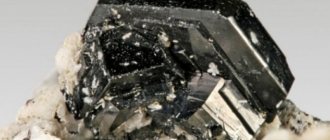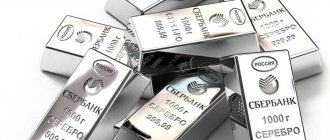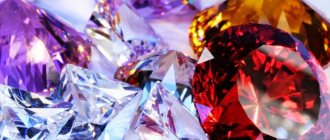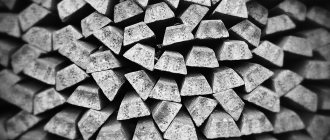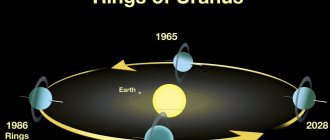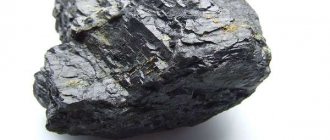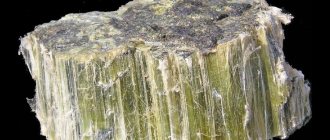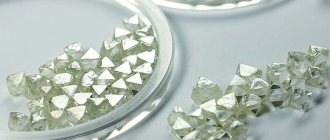At the end of the 18th century, chemist Martin Claporte initiated the study of uranium. The discovered “tar blende” - uranium ore - contributed to the extraction of the element in oxidized form. In the 19th century, it was noted that uranium salts emit invisible radiation. The radioactive stream was able to illuminate the camera plate in the dark. Uranium was not used industrially until the next century, but after the development of the theory of radioactive decay, scientists discovered the benefits that could be extracted from the metal.
Extraction methods
Uranium is common in nature. According to this indicator, it ranks 38th among other chemical elements. This radioactive metal is most concentrated in sedimentary rocks: carbonaceous shales and phosphorites. The most important minerals for mining (there are 15 types of industrially important minerals) are:
- pitchblende,
- carnotite,
- compounds with vanadium and titanium,
- silicates,
- phosphates.
The method of extracting uranium to the surface depends on the depth of the ore, the rock of the location, the composition of the isotopes and a number of other characteristics.
Open
One of the most common methods of extracting minerals, provided they are located near the outer layer of the earth's soil.
It is this that has to be removed, resorting to overburden drilling and blasting operations and transportation of waste rock to dumps. What is heavy equipment used for: bulldozers, excavators, loaders, dump trucks. Subsequently, using the same equipment, uranium-containing raw materials are developed and then sent for processing.
Construction of quarries is quite an expensive and voluminous business in terms of its scale and the resources involved. In addition, it is associated with causing irreparable environmental damage to the development site and the surrounding area.
Underground
The method is even more expensive compared to the open method, since it is necessary to penetrate into the subsoil to reach the location of the ore body. Another unfavorable factor is the economic limitation on the construction of mines with a depth of more than 2 km, which is impractical due to the significant increase in the cost of the extracted mineral resource.
However, despite these circumstances and the high level of danger for working personnel, this method allows the extraction of the highest quality raw materials. The technological cycle of underground mining includes:
- chipping (beating) of material,
- loading it onto trolleys or mine dump trucks,
- transportation of ore to the receiving bunker,
- skip lifting to the surface,
- transportation to processing sites.
Borehole in-situ leaching
Due to the many emerging organizational and economic difficulties, mining enterprises are increasingly beginning to resort to the method of borehole in-situ leaching (ISL).
After conducting geological research, the contour of the deposit is determined, along the perimeter of which wells are drilled to the required depth. Sulfuric acid, a leaching agent, is pumped into them. The resulting solution is pumped out through pumping wells drilled inside the circuit.
The extracted pulp is driven through special sorption columns, where uranium salts remain on the resin surfaces. Subsequently, this mixture is subjected to repeated purification until the required concentration of the solution is first obtained, and then until uranium oxide is formed.
What is uranium ore
Uranium ore is a mineral formation containing uranium in such quantities that it is profitable and expedient to mine and extract it. The main radioactive ores are called pitchblende and carnotite. The element can also be found in rare earth minerals - zircon, orthite, titanite, xenotime, monazite.
In addition to uranium, related valuable components are often extracted from mines. For example, in Yakutia, in the Kuranakh deposit of titanomagnetite ores, gold is being mined in parallel.
The richest ore for uranium is pitchblende. It contains up to 80% useful metal. The color of uranium resin ore is gray-black, the luster is metallic. Under ultraviolet rays, it acquires yellow, orange, green shades of the radioactive component, which are clearly visible against the background of the dark rock.
Uranium ore looks unremarkable in nature, but due to its ability to luminesce (glow under ultraviolet light), it can be found among similar gray-black rocks.
Uranium enrichment
The mined uranium ore contains 0.72% isotopes of uranium-235 (235U). The rest consists of:
- Uranium-238 – 99.2745%.
- Uranium-234 – 0.0055%.
Causes
Only the 235U nuclide is capable of independently supporting a nuclear reaction. Not only is it important for a chain reaction to occur stably - no matter: in a nuclear reactor or in an atomic weapon - it is necessary to achieve a certain concentration, thereby ensuring a high probability of neutrons meeting atoms.
This is precisely why enrichment is carried out, that is, increasing the proportion of uranium-235 in the mineral. However, the required level of concentration of this isotope in each application area is different.
Degrees
Three degrees of uranium enrichment have practical application, having names corresponding to the percentage content:
- Depleted uranium is a technological waste from the enrichment process. The 235U content in it ranges from 0.1–0.3%. However, it is gradually finding a wide range of applications as:
- chemical catalyst in the reduction reactions of hydrogen peroxide and oxygen;
- space, ship, automobile ballast and aircraft counterweight;
- radiation protection equipment;
- armor-piercing shell core;
- tank armor;
- impact mechanism of drill rods,
- means of producing complex nuclear fuel, the use of which is possible in nuclear power reactors using thermal neurons.
- Low-enriched uranium with a concentration of 235U reaching up to 20% is widely used as fuel for power and research nuclear reactors.
- Highly enriched uranium, containing over 20% uranium-235, is used in the manufacture of atomic and hydrogen bombs, as well as as long-term nuclear fuel in the reactors of sea ships and spacecraft.
Technologies
A significant number of enrichment technologies are based on standard physical processes of obtaining different acceleration by bodies with different masses. It is on this principle that the vast majority of proven enrichment methods are based.
- Thermal diffusion – concentrating isotopes of different masses in separate temperature zones.
- Electromagnetic separation – selecting differently charged ions into separate collections.
- Gas diffusion - using unequal rates of particle penetration through finely porous membranes.
- Centrifugation – separating the gas environment according to the speed of rotating flows.
- Aerodynamic separation – creating swirling flows in nozzles of a curved configuration.
There are also a number of laser technologies that have not yet received widespread industrial use.
How much does uranium ore cost?
Uranium ores have always been a strategically important raw material, but after the catastrophic events at the Fukushima nuclear plant, its price on the market dropped noticeably. Currently, 1 kg of raw materials costs approximately 2,500 rubles. But you cannot buy a radioactive element in the public domain. It can only be purchased by owners of nuclear energy enterprises.
Active mining of uranium by quarry, mine and borehole methods makes it possible to obtain uranium ore suitable for further enrichment and use. Uranium now plays an important role in global industry. It allows nuclear energy to operate and develop successfully, without which it is difficult to ensure space flights.
Watch an interesting video about the properties of uranium and experiments with it:
Tell us about the facts you know about uranium and its ores in the comments. Don't forget to share an interesting article with your friends on social networks.
Application
Nuclear fuel
The main direction of use of all types of uranium metal isotopes is nuclear energy. It is in nuclear reactors that a controlled chain reaction occurs, allowing the generation of gigantic electrical power. Moreover, both low-enriched and highly enriched uranium is used (in fast neutron reactors).
Geology
The geochronological use of uranium (uranium-lead method of radioisotope dating) makes it possible to determine the age of geological rocks and minerals. This opens up broad prospects for studying the occurrence of geological processes in the depths of our planet.
Other areas
As other areas of application of uranium, first of all, it is necessary to mention the production of nuclear and thermonuclear weapons. In addition, uranium-235 carbide is used as one of the fuel components of nuclear jet engines.
Also, some uranium compounds are included in dyes. They (compounds) were once used in photography to improve the light performance of negatives and positives.
History of discovery
Man began to use the substance even before the new era. The first product was a glaze for ceramics: mixed uranium compounds created yellow, brown, green, and black colors.
18 century
Systematic study of the element's characteristics began in the 18th century:
- German naturalist Heinrich Klaproth examined a golden-yellow concentrate extracted from local resin ore. The resulting substance was named uranium - in honor of a new planet in the solar system discovered shortly before.
- Half a century later, the Frenchman Eugene Peligot established that it was not a monosubstance, but an oxide. He obtained pure metal and “weighed” it.
- In 1874, Dmitry Mendeleev allocated the last cell of the table to the new element, “calculating” the atomic weight - 240 (twice what was then accepted).
Mendeleev's prediction was confirmed experimentally by the German Zimmerman.
19th-20th century
The history of studying matter at a new level continued at the border of the 19th and 20th centuries:
- French chemist Henri Becquerel discovered rays (later named after him).
- Marie Curie called this phenomenon radioactivity.
- Henri Moissan (creator of moissanite jewelry) created step-by-step instructions for obtaining uranium in metal form.
- The great Ernest Rutherford identified the types of radiation from uranium fragments - alpha and beta rays. Paul Villar added gamma rays to the list.
- The French-German team - Frederick Lise Meitner, Joliot-Curie, Otto Frisch - discovered the phenomenon and formula of the nuclear reaction.
Rutherford was the first to experiment with uranium material in an attempt to determine the age of rocks.
The breakthrough was created by Soviet theoretical physicists Yuli Khariton and Yakov Zeldovich. They proved that a slight enrichment of uranium with the 235 isotope makes the process of nuclear fusion possible.
Deposits in Russia and the world
List of the world's largest uranium deposits by country:
- Australia – 19 deposits. The largest of them are: OlympicDan - 3 thousand tons of production annually, Beverly - 1 thousand tons, Honemun - 900 tons.
- Kazakhstan. 16 deposits. The 6 most significant: Budenovskoe, Western Mynkuduk, Irkol, Korsan, Southern Inkai, Kharasan.
- Russia. 7 deposits. Three of them are in operation: Argunskoye, Zherlovskoye, Istochnoye.
- Canada. Known uranium deposits in this country include McArthur River, Cigar Lake and the Waterbury Project.
- SOUTH AFRICA. Dominion Field and Mines: Vaal River, Western Ariez, Palabora, Randfontein.
- Niger. 12 deposits. The largest: Azelite, Arlit, Imuraren, Madauela.
- Namibia. 4 deposits.
Effect on the body
Nanodoses of the substance (maximum - hundred thousandths of a percent) are recorded in all biological organisms. In humans, the most vulnerable places are the kidneys, spleen, bones, liver, bronchi, and lungs.
However, the radioactive metal and its compounds (especially in the form of aerosols) are toxic:
- The entire body is affected down to the cell level.
- The kidneys are the first to suffer (protein and sugar appear in the urine).
- The activity of enzymes is inhibited.
Chronic intoxication entails disruptions in the nervous system and hematopoiesis. This is a disease of workers involved in the extraction and processing of raw materials.
World reserves
Planetary uranium reserves are estimated differently. According to the World Nuclear Association, in 2022 they amounted to 6.1426 million tons.
Other sources indicate a figure of 5.5 million tons. Although, it is stipulated that proven reserves amount to 3.3 million tons, and 2.2 are estimated. The yet undiscovered deposits are estimated at 10.2 million tons. In percentage terms, uranium reserves are distributed as follows by country and continent:
- Australia – 40%.
- Canada – 15%.
- Kazakhstan – 13%.
- Brazil – 8%.
- South Africa – 6.5%.
Physico-chemical characteristics
Pure uranium is slightly softer than steel, ductile, malleable. Weak paramagnetic. The structure of the crystal lattice of a substance changes at different temperatures.
Even under normal conditions, the metal is chemically active:
- Quickly oxidizing, it becomes covered with an iridescent oxide film.
- When ground to powder, it ignites spontaneously at 151°C.
- It is corroded by water: the higher the temperature and the finer the fractions, the faster.
- Dissolves in acids, resistant to alkalis.
- Salts of the substance disintegrate in bright light or under the influence of organic matter.
Vigorous shaking of a vessel containing uranium shavings causes it to glow. By this feature, the element can be easily distinguished from others.
The chemical properties of a substance are also determined by its valence.
| Properties of the atom | |
| Name, symbol, number | Uranium / Uranium (U), 92 |
| Atomic mass (molar mass) | 238.02891(3) a. e.m. (g/mol) |
| Electronic configuration | [Rn] 5f3 6d1 7s2 |
| Atomic radius | 138 pm |
| Chemical properties | |
| Covalent radius | 142 pm |
| Ion radius | (+6e) 80 (+4e) 97 pm |
| Electronegativity | 1.38 (Pauling scale) |
| Electrode potential | U←U4+ -1.38V U←U3+ -1.66V U←U2+ -0.1V |
| Oxidation states | 6, 5, 4, 3 |
| Ionization energy (first electron) | 686.4(7.11) kJ/mol (eV) |
| Thermodynamic properties of a simple substance | |
| Density (at normal conditions) | 19.05 g/cm³ |
| Melting temperature | 1405.5 K |
| Boiling temperature | 4018 K |
| Ud. heat of fusion | 12.6 kJ/mol |
| Ud. heat of vaporization | 417 kJ/mol |
| Molar heat capacity | 27.67 J/(K mol) |
| Molar volume | 12.5 cm³/mol |
| Crystal lattice of a simple substance | |
| Lattice structure | orthorhombic |
| Lattice parameters | a = 2.854 Å; b = 5.870 Å; c = 4.955 Å |
| Other characteristics | |
| Thermal conductivity | (300 K) 27.5 W/(mK) |
| CAS number | 7440-61-1 |
Quadrivalent uranium samples are unstable; when exposed to air for a long time, they become hexavalent.
The main characteristic of uranium is radioactivity. Its value is considered an advantage or disadvantage depending on the purpose of using the substance.
Uranium can exhibit oxidation states from +3 to +6.
| Oxidation state | Oxide | Hydroxide | Character | Form | Note |
| +3 | Does not exist | Does not exist | — | U3+, UH3 | Strong reducing agent |
| +4 | UO2 | Does not exist | Basic | UO2, halides | |
| +5 | Does not exist | Does not exist | — | Halides | Disproportional in water |
| +6 | UO3 | UO2(OH)2 | Amphoteric | UO22+ (uranyl), UO42- (uranate), U2O72- (diuranate) | Stable in air and water |
The reactions of uranium metal with other nonmetals are given in the table below.
| Non-metal | Conditions | Product |
| F2 | +20 oC, stormy | UF6 |
| Cl2 | 180 oC for crushed 500-600 oC for compact | Mixture of UCl4, UCl5, UCl6 |
| Br2 | 650 oC, calm | UBr4 |
| I2 | 350 oC, calm | UI3, UI4 |
| S | 250-300 oC quiet 500 oC burning | US2, U2S3 |
| Se | 250-300 oC quiet 500 oC burning | USe2, U2Se3 |
| N2 | 450–700 oC the same under pressure N 1300o | U4N7 UN2 UN |
| P | 600—1000 oC | U3P4 |
| C | 800—1200 oC | UC, UC2 |
Countries mining uranium
Top world producing countries (there are 14 of them) of nuclear fuel in 2022:
- Kazakhstan – 21,705 thousand tons. 41% of world production, amounting to 53.498 thousand tons.
- Canada – 7,001 thousand tons. Which is 13% of the global level.
- Australia – 6,517 thousand tons or 12%.
- Namibia - 5.525 thousand tons.
- Niger - 2,911 thousand tons.
- Russia – 2,904 thousand tons.
- Uzbekistan – 2.404 thousand tons.
- China – 1.855 thousand tons.
- Ukraine – 1.18 thousand tons.
- USA - 582 tons.
- Also engaged in uranium mining are: India - 423 tons, South Africa - 346 tons, Iran - 71 tons and Pakistan - 45 tons.
Author: Yuri Florinskikh All articles by this author
Latest articles by the author: The largest producers of milk and dairy products in the world Diamonds: properties, mining methods and applications
Receiving technology
Microdoses of uranium in the lithosphere determined the method of obtaining the metallic substance:
- Enrichment. The raw materials are crushed and filled with water. The heavy primary uranium minerals precipitate first.
- Leaching. The concentrate is treated with sulfuric acid or alkali. From complex ores, the substance is leached by blowing at 150°C.
- Uranium is isolated from the resulting solution - by extraction or ion exchange . This is a multi-step procedure.
- To form a solid form of a substance, impurities are removed . That is, a technically pure compound of a substance is dissolved with acid, crystallized, and calcined.
- The output is trioxide . It is reduced to dioxide with hydrogen.
It is exposed to dehydrated hydrogen fluoride. Magnesium or calcium is added and uranium metal is reduced.
Production provides four-fifths of the need - the rest comes from decommissioned nuclear weapons.
How environmentally friendly is nuclear energy?
On the one hand, nuclear power plants do not emit CO2, which is important for achieving carbon neutrality. It is not surprising that the atom has already been recognized as “green” not only in Russia, but also in China, India, England and the USA, Interfax cites a source in Rosatom.
Thus, the Celestial Empire plans to build another 150 nuclear reactors in the next 15 years. In order to assess the scale of the task at hand, it is enough to say that, according to Expert magazine estimates, there are currently 450 of them in the world. Even in Japan, where public opinion was opposed to nuclear power plants after the Fukushima accident, it was decided to increase the number to 20. 22% share of “atom” in the country’s overall energy consumption structure.
On the other hand, nuclear power is denied green status due to hazardous waste and catastrophic consequences in the event of an accident. Particularly heated debates are taking place in the EU, where there is no unity on the issue of the status of nuclear power plants.
However, implementing ambitious plans to achieve carbon neutrality without nuclear power will be problematic. Events this fall have shown that wind and solar power plants cannot meet the needs of the economy. Against this background, the news that the new Dutch cabinet decided to allocate 500 million euros for new nuclear power plants looks indicative.
In general, attitudes towards nuclear energy in the world are changing, writes Expert magazine. In the new IAEA forecast, it is with this that the achievement of climate goals is linked. And for this, by 2050, nuclear power plants around the world need to generate 2 times more energy than now.

